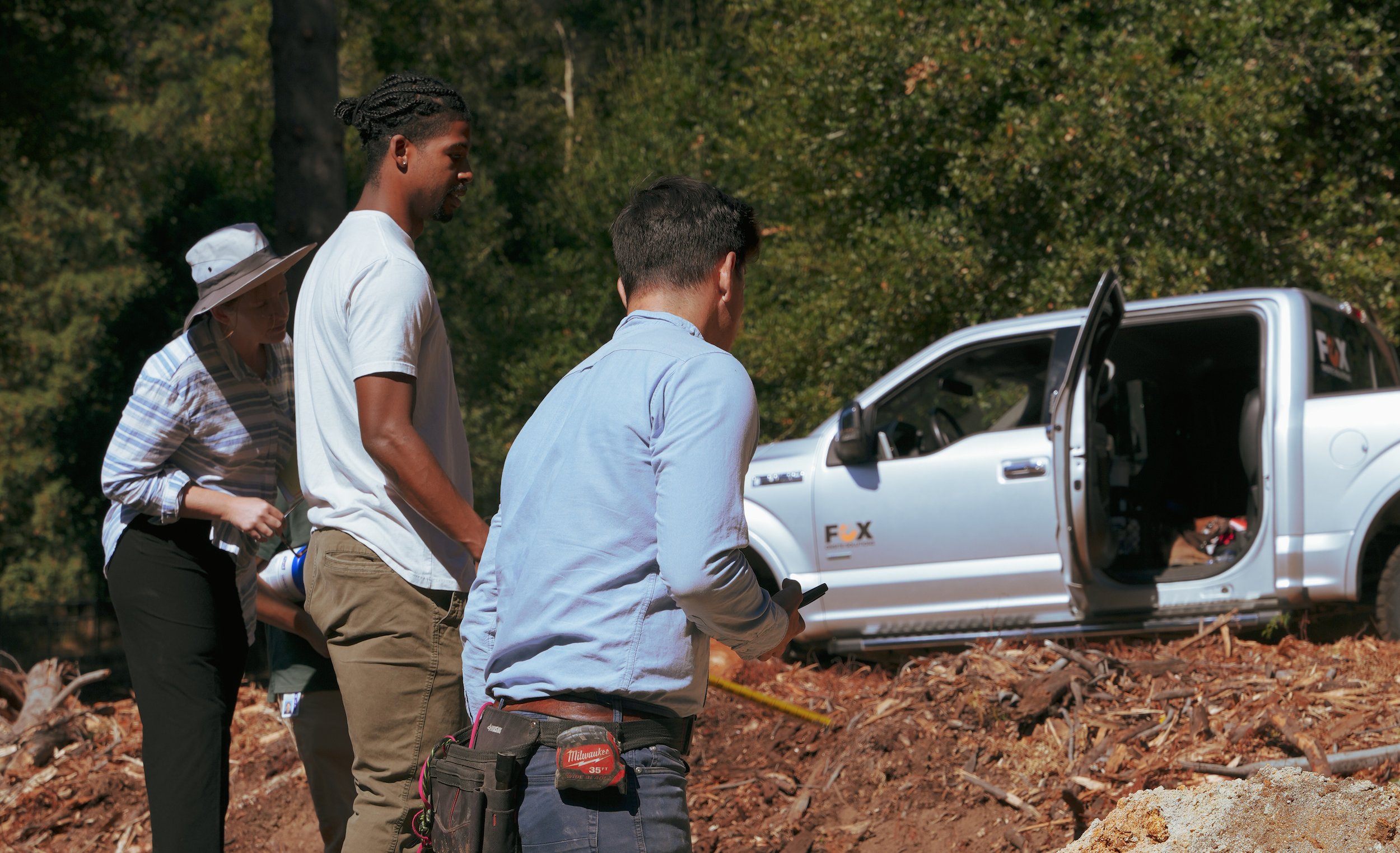
New Septic System Builds
Installation of Onsite Wastewater Treatment Systems (septic systems) is tricky business
We often take for granted that our wastewater simply disappears at the pull of a plug but if your new home is in a remote area that requires an off-mains system, then you might suddenly find yourself wondering how to install a septic system.
At Fox Onsite Solutions, we’re here to help you reduce stress and save time. Discuss the feasibility of your project and how to best move forward with permitting and design by reaching out today.
An incorrectly installed septic system can leave you with a nasty mess and that’s why hiring a professional is the best way to go.
Find the best septic design for your needs
File all permitting legally and reliably
Install the system professionally
Here’s How It Works:
At Fox Onsite Solutions we take a client-centered approach to simplify the installation process.
Any septic project can be broken into two phases:
Phase 1: Testing, Design, & Permitting
Phase 2: Install & Follow Up
Phase 1: Permitting, Testing, and Design
Contact: Client contacts us with specific details about your project, including project scope (ex bedroom addition), APN, address, and any other applicable information.
1
Proposal and Parcel Feasibility: Fox Onsite Solutions with contact you with your project feasibility and if appropriate a proposal.
2
Agree to Terms + Deposit: If the proposal is acceptable the client signs the proposal and pays the retainer/deposit. Once both are completed by the client the consultant starts work.
3
Submit Permits + Schedule Testing: Applicable permits are submitted and soil testing (percolation test + soil profile) is scheduled with the county.
4
Soil Testing + Perc Testing: Soil Testing (perc test) is conducted and the observed by the county. Through this testing a soil application rate is determined.
5
Gather Maps + Records: Consultant works with owner/civil/architect/surveyor to utilize the best site map for the parcel. While also gathering the existing septic’s layout for the county office.
6
Septic System Design + Permitting: A septic system is designed based on the testing parameters . A report of the septic design is written and submitted to the county. Final design is determined based on site conditions/testing results.
7
County Design Review: County reviews project design and testing (typically 2-6 weeks). Conducts independent site visit to verify sizing.
8
Plan Approval + Building Clearance: County grants approval and send out building clearance. Allowing for the project’s building plans to be submitted.
9
Phase 2: Install and Follow Up
Permit Issued by County : Once the building plans are approved the Septic permit is issued. Now the system can be installed by an approved, certified installer.
1
Select Contractor: Owner places the project to bid and selects contractor. Specialized contractors are needed for enhanced treatment system installation. List of approved contractors are available on the county website.
2
Order parts + Schedule install: Contractor and owner order parts and schedule install. Contacting county prior to start of work with proposed start date
3
System Installation + Preconstruction Meeting(Alt): Contractor installs the system per the design specifications. County inspector oversees critical points (water tight test, septic tank, leachfield, etc.). with periodic inspections. If an enhanced treatment system is to be installed a preconstruction meeting is required.
4
As built + Final Consultant Letter(Alt): If the installed system varies from the design an “As Built” map is created to show all the component locations and important distances. If the project involves an enhanced treatment system (Alt. System) a final consultant letter is also submitted.
5
County Final: Final approval is signed off by the inspector and sent to the county so they can authorize the final occupancy of the home.
6
New builds require careful assessment before building.
As Professional Septic Designers,
Here Are A Few Things We Consider:
Septic System Type
& Design
There are so many types of septic systems. How do you know which is best for you?
We’ll assess your situation through various tests and help you choose the best design for your build.
Size of the System
The size of the septic system includes the size of the septic tank and dimensions of the drain field.
An appropriate OWTS should be large enough to accommodate daily water volume usage and handle expected future usage.
Terrain
Drought-prone California requires careful considerations for septic installation.
Before we install a new system, we have to assess how it will be able to handle issues such as runoff water and flooding after a heavy downpour.
Landscaping & Ease Of Access
The septic system should be be installed in an easy-to-access location free of obstacles like buildings or trees.
This will make it easier for routine maintenance and any future upgrades and repairs.
FAQ’s


